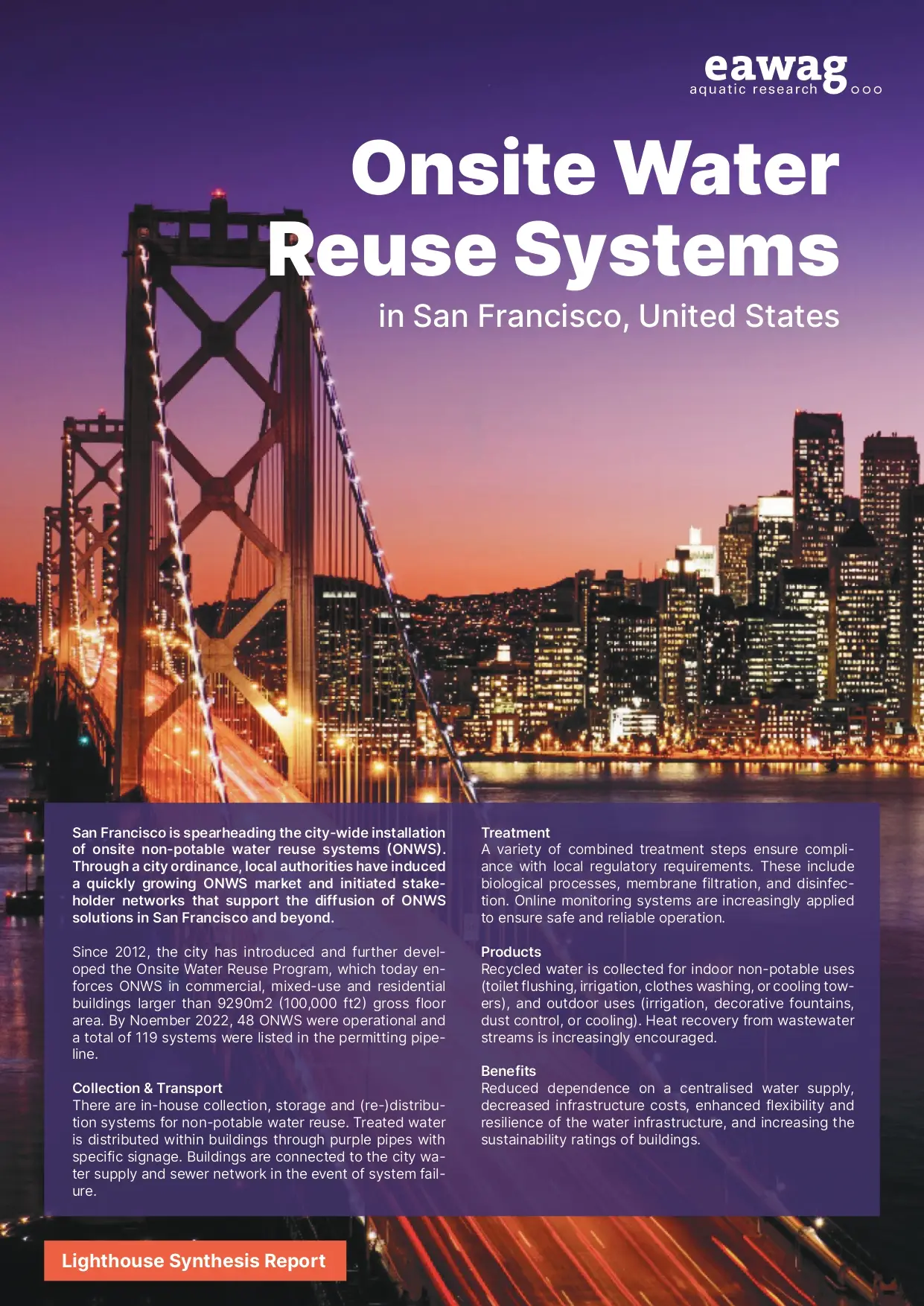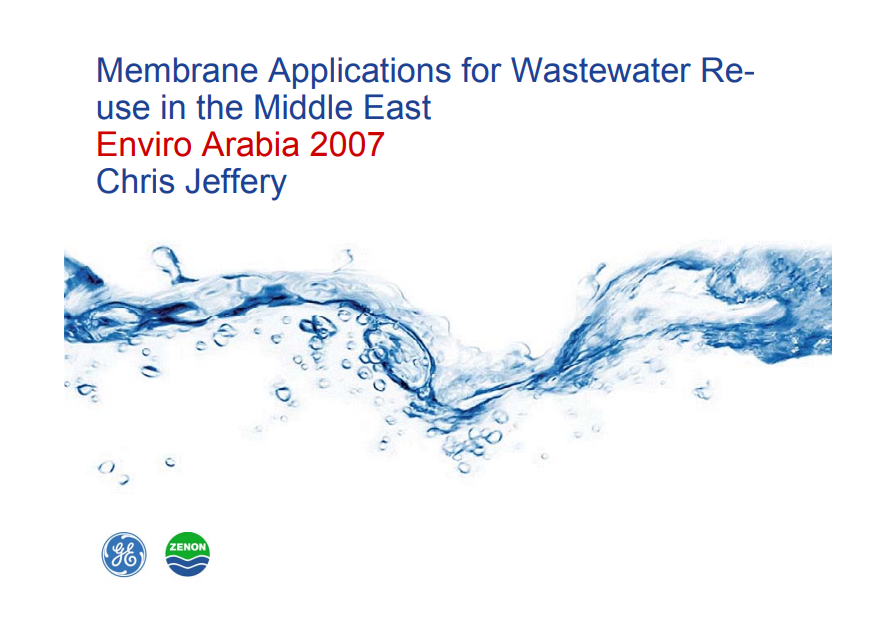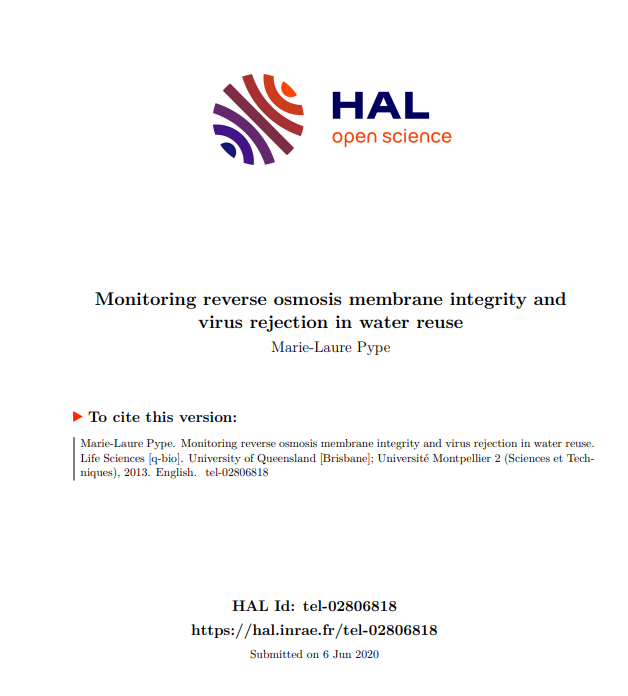Water Resources & Reuse
Onsite Water Reuse Systems In San Francisco, United States
Onsite Water Reuse Systems In San Francisco, United States
Source: https://www.eawag.ch
Author: Nof Afghani, Vasco Schelbert, Christoph Lüthi, Christian Binz
San Francisco (SF) is a densely populated major economic hub in Northern California with high economic dynamism and fast population growth. SF used to have a non-diversified water supply system, which heavily relied on the longdistance transfer of surface freshwater. Since the end of the 20th century, increasing water consumption and repeated droughts have resulted in water stress, forcing local authorities to explore alternative water sources.
Only logged in customers who have purchased this product may leave a review.















Reviews
There are no reviews yet.